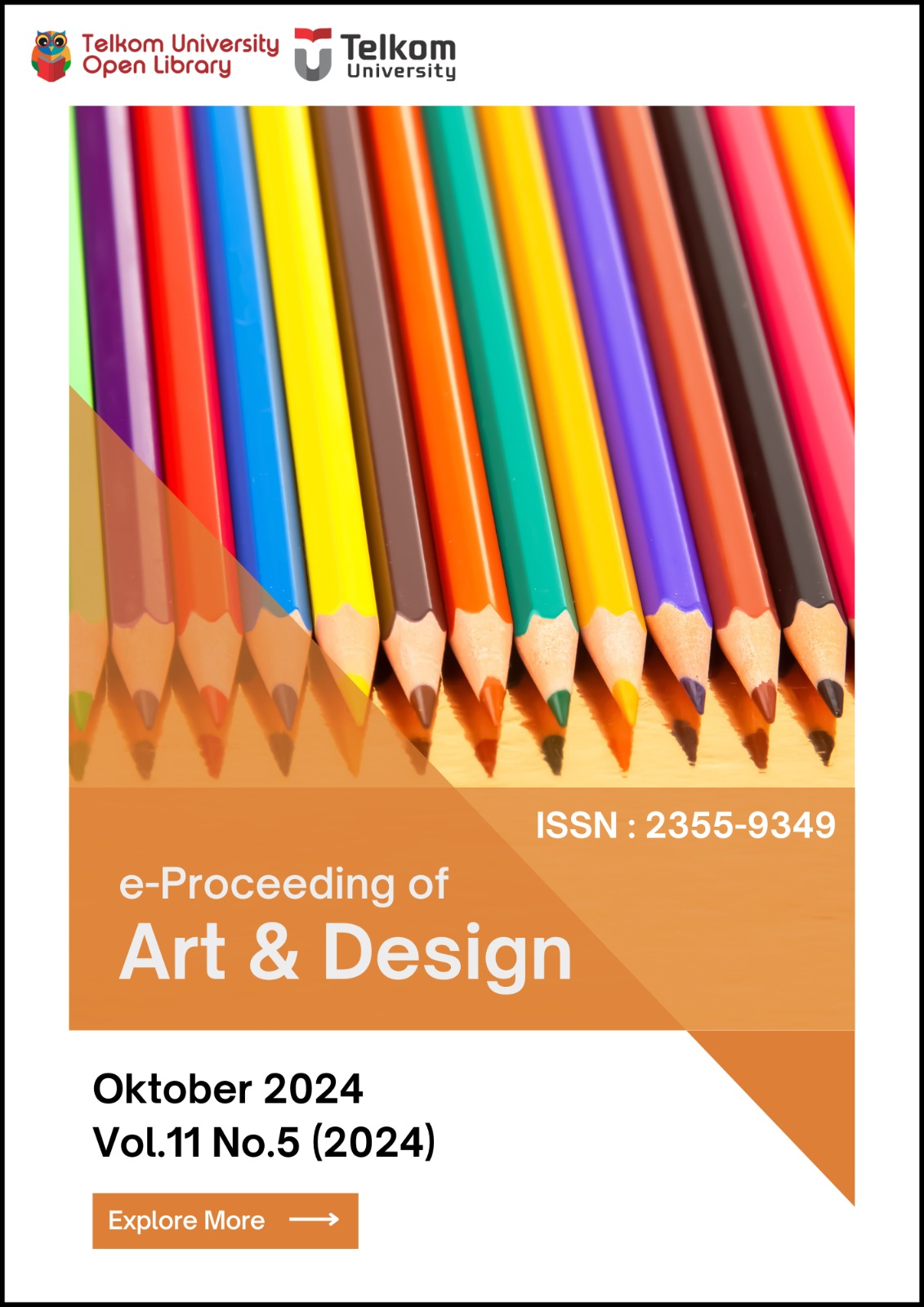Redesign of Rumentang Siang Bandung Art Building with an Adaptive Reuse Approach
Abstract
The Rumentang Siang Arts Building is one of the performance buildings that is still active in the city of Bandung, even though the facilities are outdated. This building was originally built as a cinema and was converted into a cinema. The city of Bandung is a city with a variety of developing arts and artist communities. The city of Bandung has more than 887 types of art spread across various studios, communities and hermitages. Even though the city of Bandung is so rich in art, the problem faced is the lack of suitable and adequate performance buildings. This is a problem because there is limited space and land that can be used to build new performance buildings due to the dense population in this city. Optimizing existing buildings can be one solution to anticipate and facilitate the increasing number of arts activists. With so many art performances being held, the Rumentang Siang Building, which is one of the heritage buildings used as a performance hall, will only become increasingly burdened. The adaptive reuse approach is usually used in heritage buildings in their preservation so as not to reduce the historical value of the building. The design of the Rumentang Siang performance building is expected to create a performance building that has adequate facilities and accessibility to facilitate Bandung City arts activists as well as designing a renewable performance building while maintaining historical and cultural values.
Keywords: performance hall, adaptive reuse, hertage building.
References
Adler, D. (2007). Metric Handbook. Routledge.
Agnes, T. (2018). 5 Venue Pertunjukan Seni Ibu Kota yang Mungkin Belum Kamu Ketahui. Diakses 2023, dari https://hot.detik.com/art/d-4264770/5-venue-pertunjukan-seni-ibu-kota-yang-mungkin-belum-kamu-ketahui
Andriani, F. (2021). Omah Teater Jogja di Daerah Istimewa Yogyakarta dengan Pendekatan Arsitektur Kontemporer (Disertasi, Universitas Atma Jaya Yogyakarta).
Andrianawati, A., Anwar, H., Fidinillah, A., & Goestien, C. S. (2018). Comparative Study of Waiting Space Design for Comfort Visitors of Cinemas XXI Bandung Indah Plaza with CGV Bandung Electronic Center. Vol. 2, Issue 2.
Appleton, I. (2008). Buildings for the Performing Arts. Elsevier.
Artini, K. R. (2006). Pelestarian Art Deco di Indonesia: Suatu Dilema. Jurnal Dimensi Seni Rupa dan Desain, 3(2), 203.
Bollack, F., & Frampton, K. (2013). Old Buildings, New Forms: New Directions in Architectural Transformations.
Budiono, I. Z., Amira, L. N., Syafii, A. D., Farida, A., & Abdulhadi, R. H. W. (2023). Evaluasi Kenyamanan Aktivitas Kerja para Pegawai Berdasarkan Indikator Kenyamanan Termal. Jurnal Desain Interior, 7(2), 99. https://doi.org/10.12962/j12345678.v7i2.15367
Doelle, L. L. (1972). Akustik Lingkungan.
Dwika Aprilian, R., & Widiastuti, I. (2021). The Story of Adaptive Reuse in Jakarta’s Old Building Under the Instagrammable Era.
Faza, H., Rusyda, S., Nur, A., Gunawan, S., Hambali, R., & Abdulhadi, W. (2022). Study of Air Flow on Natural Ventilation at Tawang Station Semarang.
Fikrissalim, M., Rahardjo, S., Widyaevan, D. A., & Joshua, I. (2019). Penyikapan Arsitektur Tropis dalam Mempertahankan Lokalitas Arsitektur Kolonial yang Beralih Fungsi Menjadi Kedai Kopi. ATRAT: Jurnal Seni Rupa, 7(2), 187–204.
Fitch, J. M. (1990). Historic Preservation: Curatorial Management of the Built World. McGraw-Hill.
Fuadona, F. (2016). Banyak Pementasan Teater, Bandung Kekurangan Gedung Pertunjukan. Diakses dari https://bandung.merdeka.com/halo-bandung/read/88485/banyak-pementasan-teater-bandung-kekurangan-gedung-pertunjukan
Ham, R. (1972). Theater Planning. The Architectural Press.
Ismiranti, A., Akhmadi, A., Arumsari, A., Hadiansyah, M., Denandra, A., & Azizah, S. (2023). Method Design of Interactive Digital Devices to Support the Workspace Comfort. International Journal of Visual and Performing Arts, 5, 120–133.
Kusumaningtyas, O. G., & Purnomo, A. D. (n.d.). Adaptive Reuse pada Interior Rumah Bodrie 1934 di Surabaya.
Mediastika, C. E. (2005). Akustika Bangunan: Prinsip-prinsip dan Penerapannya di Indonesia. Erlangga.
Neufert, E. (2002). Data Arsitek (Jilid 1 dan 2). Erlangga.
Niswan, M., Bilada, H., & Sukarelawati, S. (2018). Hubungan Pertunjukan Teater dengan Perilaku Penonton. Jurnal Sosial Humaniora, 9(2), 138–143. https://doi.org/10.30997/jsh.v9i2.1381
Peraturan Menteri Pariwisata Nomor 17 Tahun 2015 tentang Standar Usaha Gedung Pertunjukan Seni.
Peraturan Presiden Nomor 58 Tahun 2014 tentang Rencana Tata Ruang Kawasan Borobudur dan Sekitarnya.
Putra, Y. C. (2019). Perencanaan dan Perancangan Gedung Pertunjukan dan Kesenian di Kota So’e (Dengan Pendekatan Arsitektur Dekonstruksi) (Skripsi, Universitas Katolik Widya Mandira).
Ramadhan, A., & Mazhi, K. Z. (2022). Kajian Daya Dukung Lahan Perkotaan dalam Rangka Optimalisasi Penataan Ruang Kota Bandung. Journal of Regional and Rural Development Planning, 6(3), 212–232.
Snarski, R. (2019). Guard House Layout | Guad Shack with Restroom Design. Diakses 10 Desember 2023 dari https://guardianbooth.com
Schmidt, R. (2009). Adaptable Futures: A 21st Century Challenge. Noordwijk aan Zee, The Netherlands, 5–9 Oktober 2009.
Strong, J. (Ed.). (2010). Theatre Buildings: A Design Guide. Routledge.
Susanto, H. (2015). Prinsip-Prinsip Akustik dalam Arsitektur. PT Kasinius.
Undang-Undang Nomor 1 Tahun 2011 tentang Perumahan dan Kawasan Permukiman.
Undang-Undang Republik Indonesia Nomor 11 Tahun 2010 tentang Cagar Budaya.






